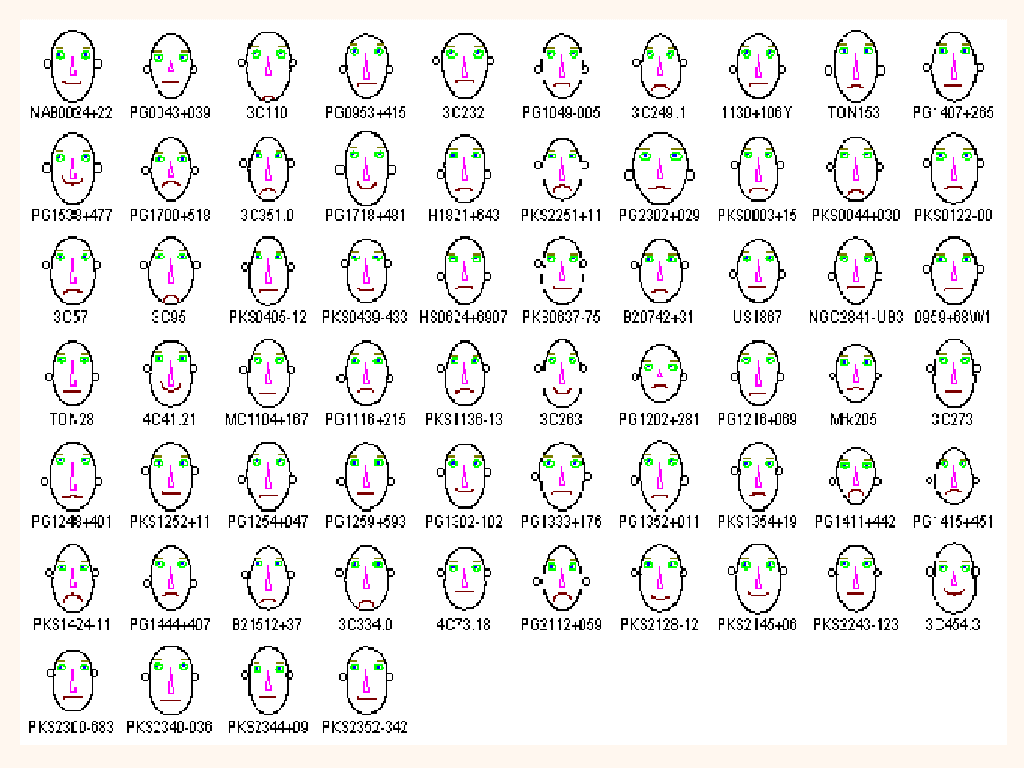Chernoff Faces
Chernoff faces, invented by Herman Chernoff in 1973, display multivariate data in the shape of a human face. The individual parts, such as eyes, ears, mouth and nose represent values of the variables by their shape, size, placement and orientation. The idea behind using faces is that humans easily recognize faces and notice small changes without difficulty.
sourceThe Good
 Source
Source
Faces show the economic climate of each month, The better the larger the features. This clearly indicates the quality of the economy for each respective month.The fewer representations the clearer the content is.
The Goodish
Differences are somewhat clear but still difficult to determine variations in smaller features IE. Mouth and Nose.
The Bad
Faces are too similar to determine differences quickly and effectively, brightly colored eyes make it hard to tell the difference in size and shape.
Conclusion
Chernoff faces allow for multivariate data to be digested quickly, only if certain criteria is met:
- Limited examples
- Differences are clearly recognizable
- Intention is to highlight similarity in large datasets
- or highlight differences in smaller datasets
IBM research found that "Chernoff faces may not have a significant advantage over other multivariate iconic visualization techniques."source based on a study that looked at the amount of time and number faces presented to a view who's intent was to pick the average. They found in that if a user was given more time than they had a 45-55 % chance of finding the average. representing multivariate data through alternative methods has proven to show better results.

